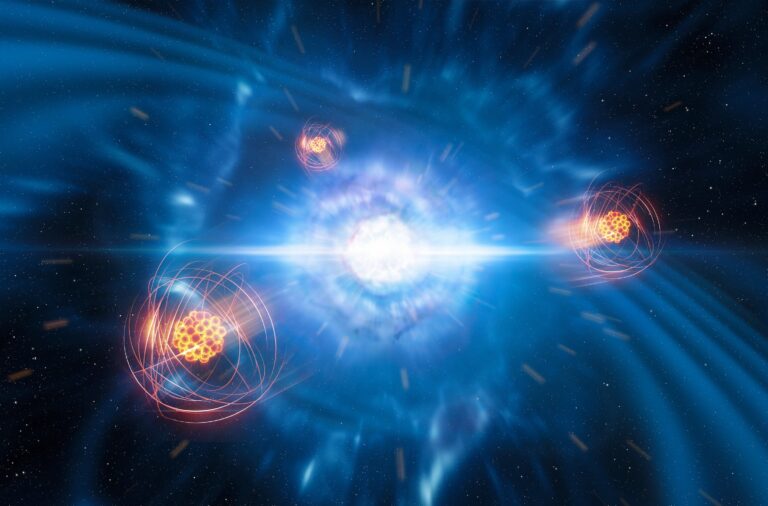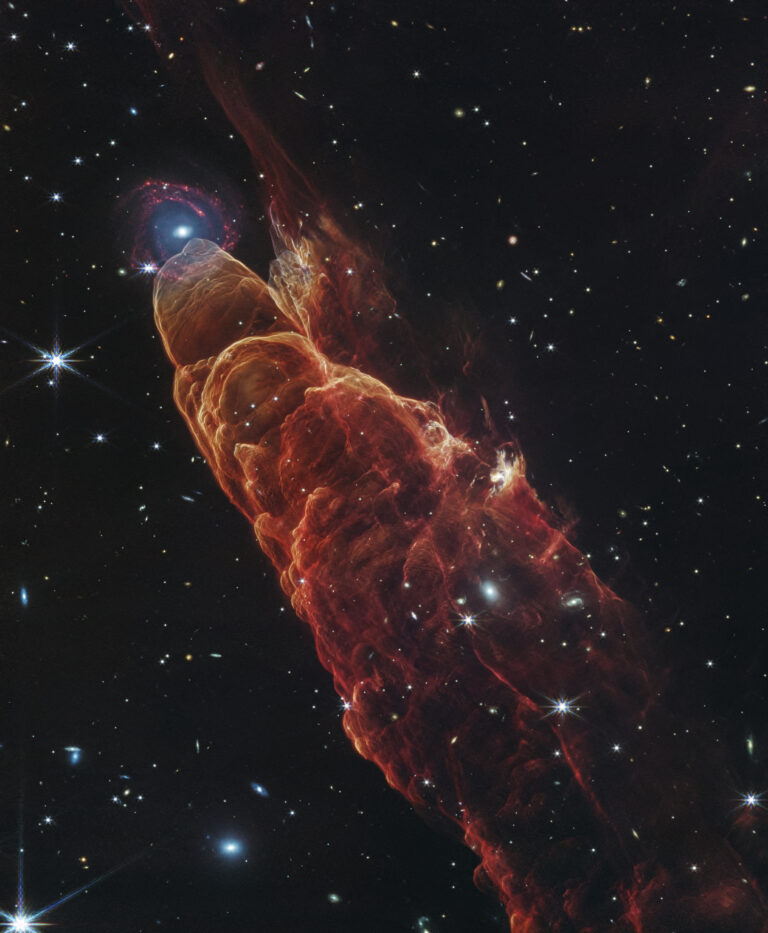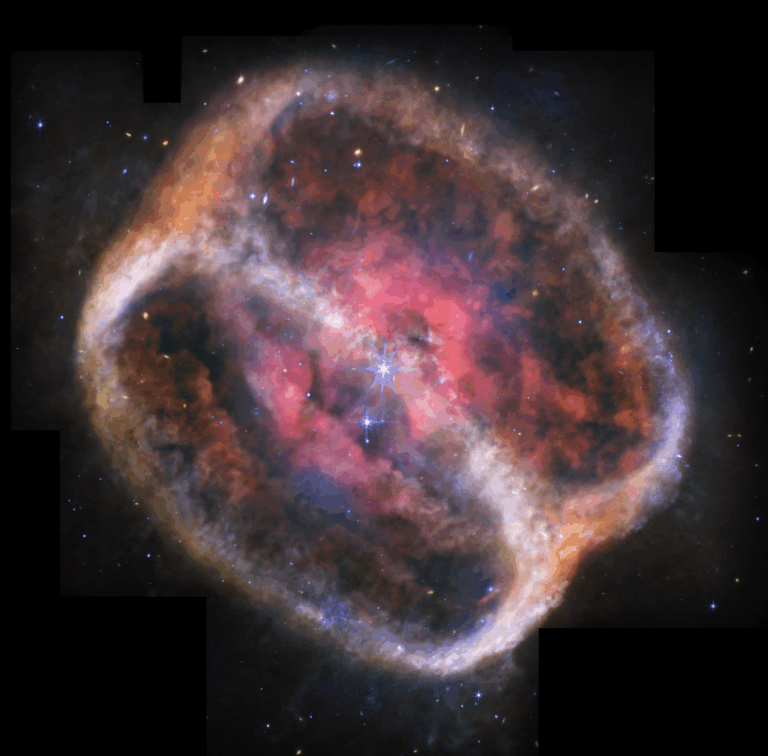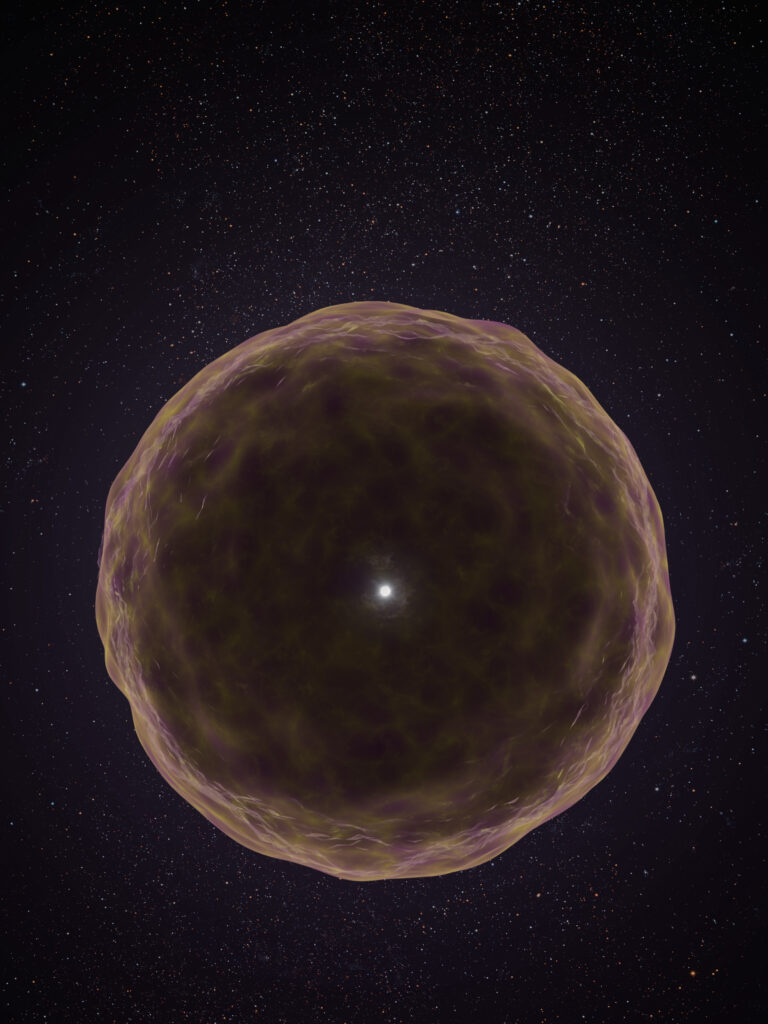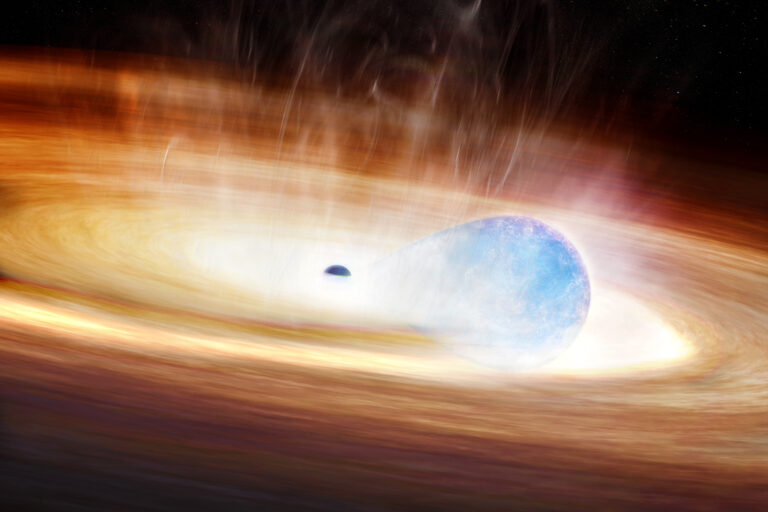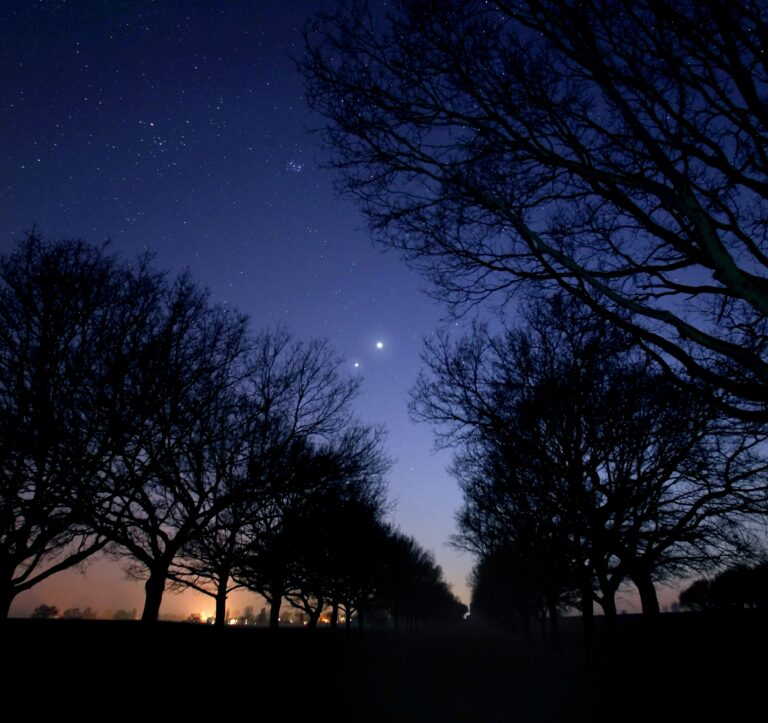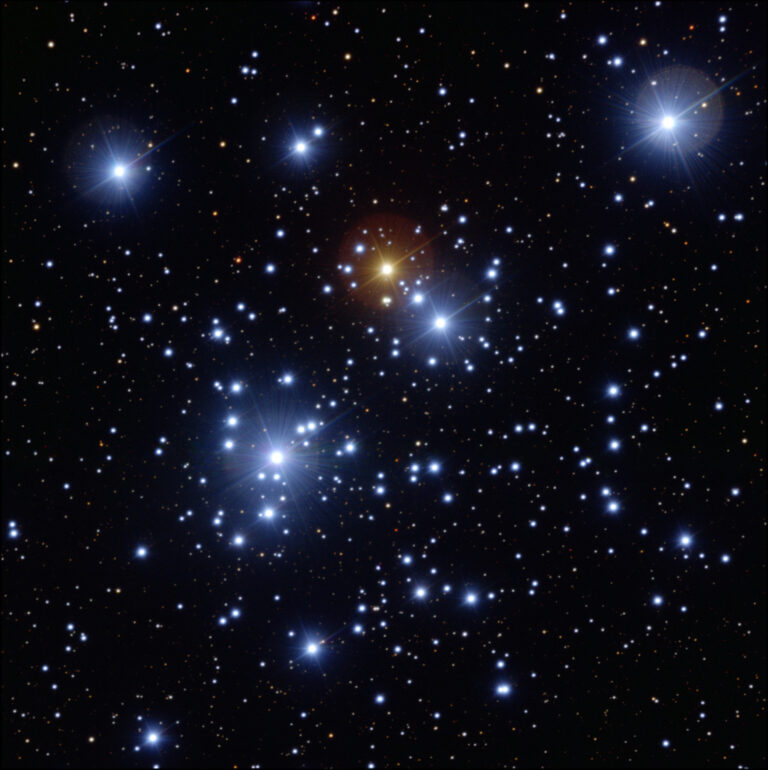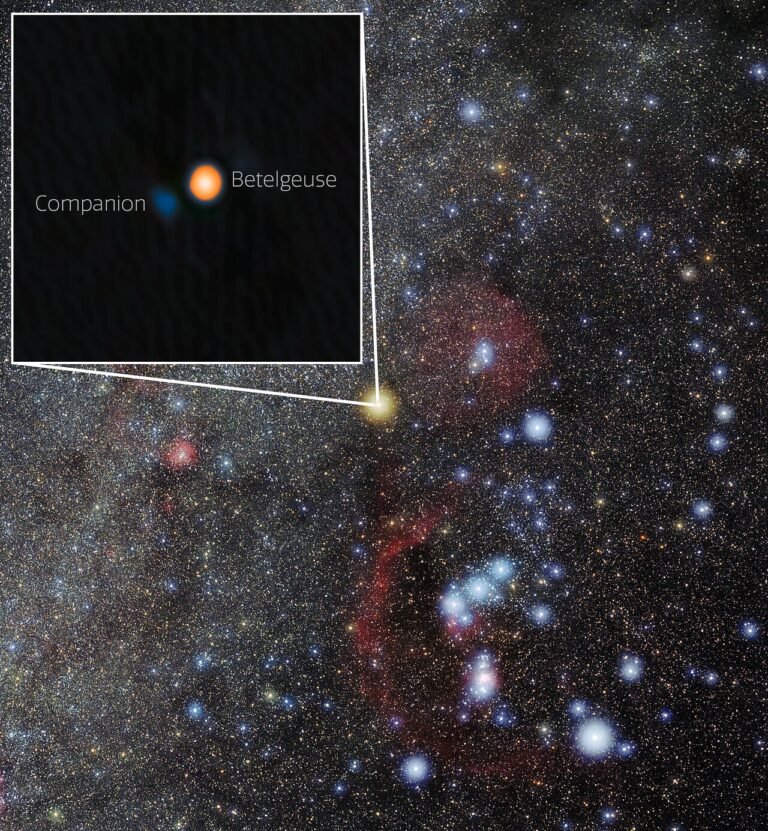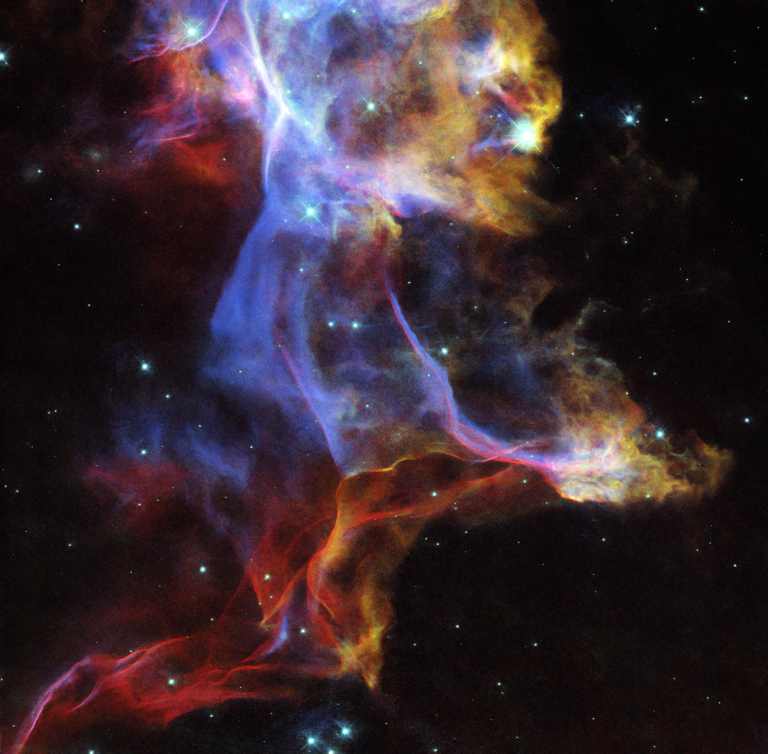Key Takeaways:
Residing 1,300 light-years away in the famous constellation Orion the Hunter is the triple-star system GW Orionis. Of its three stars, two closely orbit each other, while a third orbits the pair. These stellar triplets are young, still surrounded by a disk of dust, gas, and debris left over from their formation. And this disk, called a protoplanetary disk, has caught astronomers’ attention for several reasons — not least of which because it might harbor the first known exoplanet orbiting a trio of stars.
The disk around GW Orionis consists of three concentric rings of material, none which align with any of the orbits of the system’s three stars. Furthermore, the innermost ring doesn’t even align with the other rings, and it strangely tilts and wobbles as it orbits. And finally, there’s a big gap carved in the disk, which indicates that most of the material there has been cleared out.
Of course, researchers want to know what’s going on in GW Orionis. And a new paper published Sept. 17 in Monthly Notices of the Royal Astronomical Society may hold the answer: There’s a so-called circumtriple planet (or planets) forming within the disk, orbiting all three stars at once.
Making space
Gaps in protoplanetary disks are well known for hinting that planets are forming within them. As planets pull in nearby gas and dust to grow, they naturally clear out their surroundings. But in this case, researchers weren’t sure whether the disk’s strange behavior should be attributed to a fledgling planet or to the whirling activity of the three stars within.
As it turns out, based on 3D modeling of the system, those three stars can’t produce enough torque to clear out the gap in the disk we see. Instead, the researchers say, that gap is most likely due to at least one Jupiter-sized planet forming there. If confirmed, it would be the first ever exoplanet found to orbit three stars. (Although planets have been discovered in just over 30 triple systems to date, none of these worlds orbits all three stars.)
The supposed planet or planets would orbit the system about 100 astronomical units (AU) from the center (1 AU is the average Earth-Sun distance). The stars themselves are much closer together. The tightly orbiting pair are separated by just 1 AU, while the third star orbits some 8 AU from the center of the system.
Because this research only provides indirect evidence for the first circumtriple planet, the next step will be actually spotting the strange world. Unfortunately, the authors conclude, that’s tricky when dealing with a system as complex as GW Orionis. Still, more observations are coming down the pike. And just maybe they will reveal a glimpse of a truly unique young world.


